Find out if there are cracks on the suspension parts or traces of rubbing against road obstacles or the body, deformation of the levers, stabilizer bar, rear body parts at the attachment points of suspension units and parts.
Check the condition of rubber-metal hinges, rubber cushions, condition (draft) suspension springs.
Rubber-metal hinges and rubber pads must be replaced in case of ruptures and one-sided buckling of rubber, as well as when cutting their end surfaces.
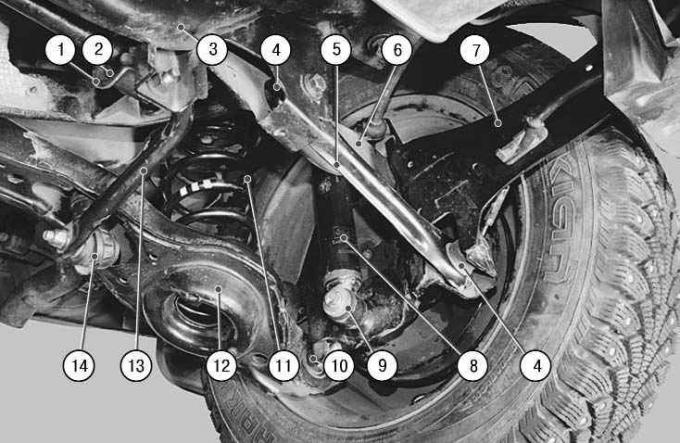
Pic. 4.3. Arrangement of elements of a back suspension bracket on the car: 1 – a bracket of fastening of a bar of the stabilizer; 2 – a pillow of a bar of the stabilizer; 3 - cross member of the rear suspension; 4 - silent block of the front lower arm of the rear suspension; 5 - front lower arm of the rear suspension; 6 - the upper arm of the rear suspension; 7 – trailing arm of the rear suspension; 8 - shock absorber; 9 - rubber bushing of the lower mounting of the shock absorber; 10 - silent block of the rear lower arm of the rear suspension; 11 - spring; 12 - rear lower rear suspension arm; 13 – bar of the anti-roll bar; 14 - stabilizer bar
The arrangement of elements of a back suspension bracket on the car is shown on fig. 4.3.
On rubber-metal hinges are not allowed:
– signs of aging, cracks;
– one-sided buckling of the rubber array.
Replace defective parts.
Check for mechanical damage (deformations, cracks, etc.) suspension elements.
1. Inspect the rubber bushings 9 (see fig. 4.3) shock absorber lower mount and shock absorbers 8. The shock absorbers must not drip liquid and «sweating».
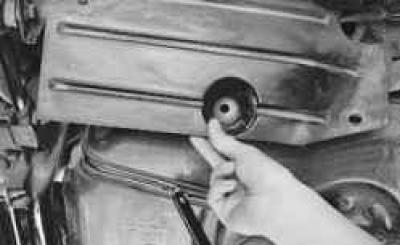
2. Remove the protective shields from both sides of the car (cm. «Removal and installation of a cross-beam of a back suspension bracket»).
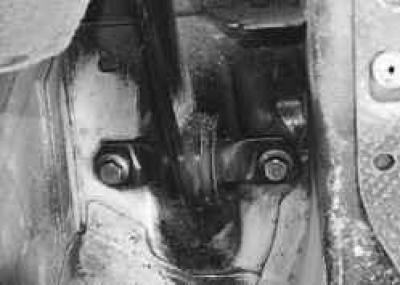
3. Check the rubber joints (silent blocks) trailing arm of the rear suspension to the car body.
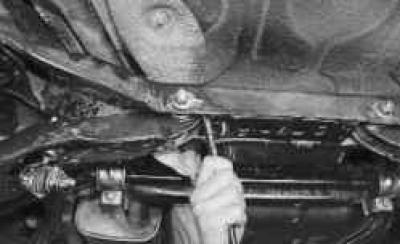
4. Using a mounting spatula, check for internal backlash..
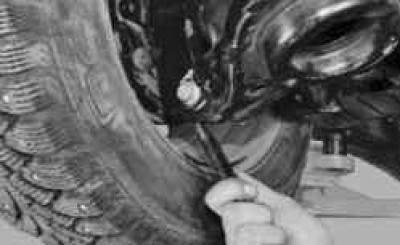
5.... and external silent blocks of the rear lower levers..
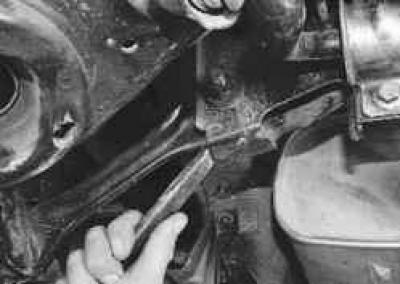
6. …internal…
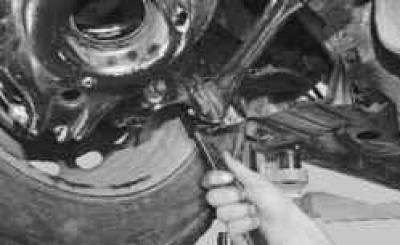
7.... and external silent blocks of the front lower arms.
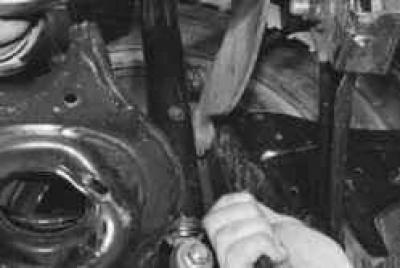
8. Similarly, check the inner and outer silent blocks of the upper arms of the rear suspension.
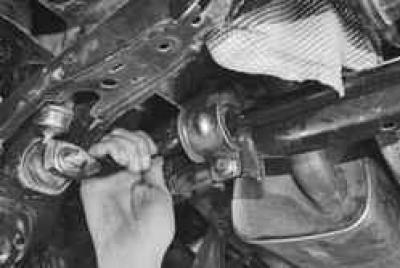
9. While rocking the anti-roll bar up and down, check for any play in the stabilizer struts and rubber pads on the stabilizer bar.
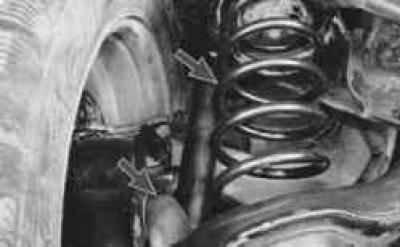
10. Check springs and compression buffers.
USEFUL ADVICE: Pay attention to the exhaust system. Extraneous knocks published by her are often mistaken for a knock in the rear suspension. The use of non-standard parts or the breakage of the muffler suspension elements can cause a strong knock, especially during regassing. To check, stop the engine, carefully inspect the exhaust system, check the reliability of the mounting and suspension of the muffler. Grasping the end of the exhaust pipe, shake the muffler up and down and from side to side - there should be no knocks.
Visitor comments